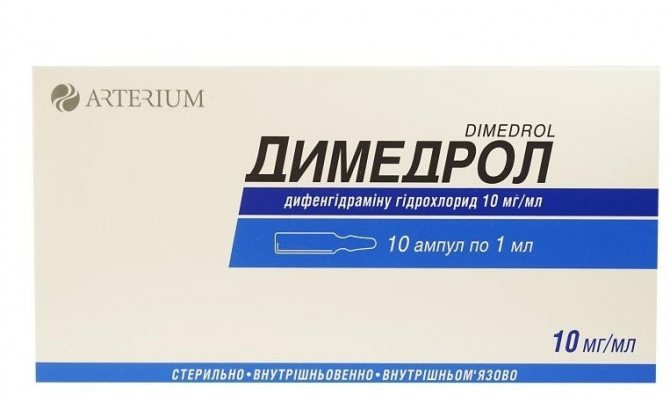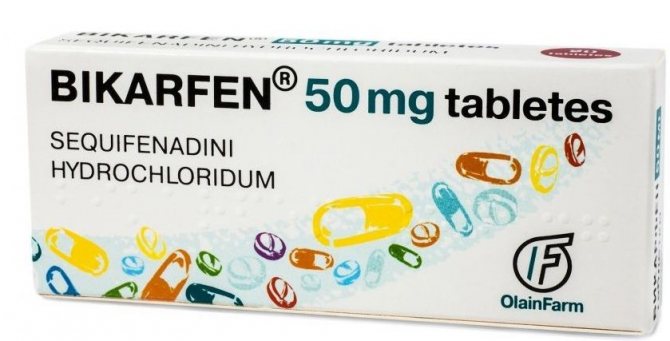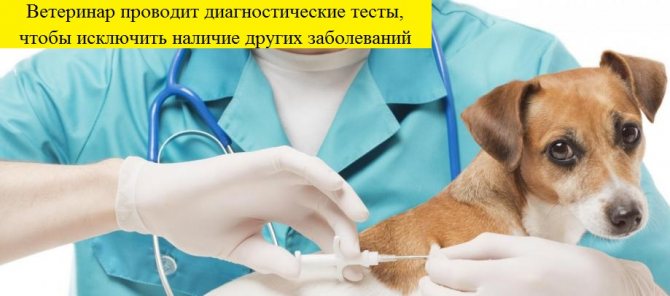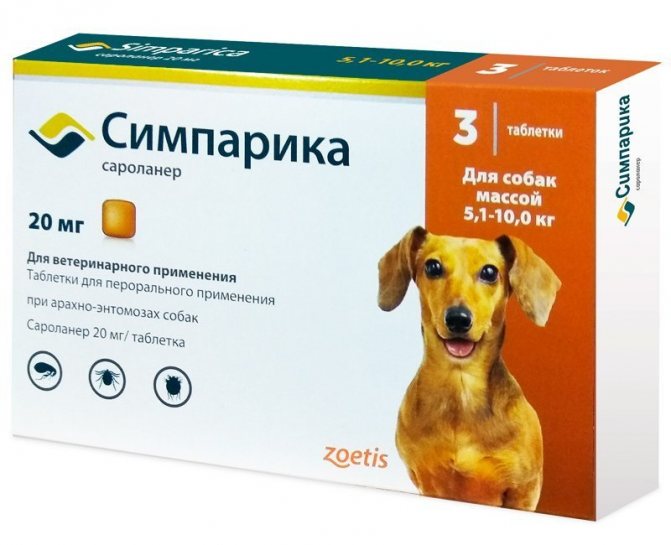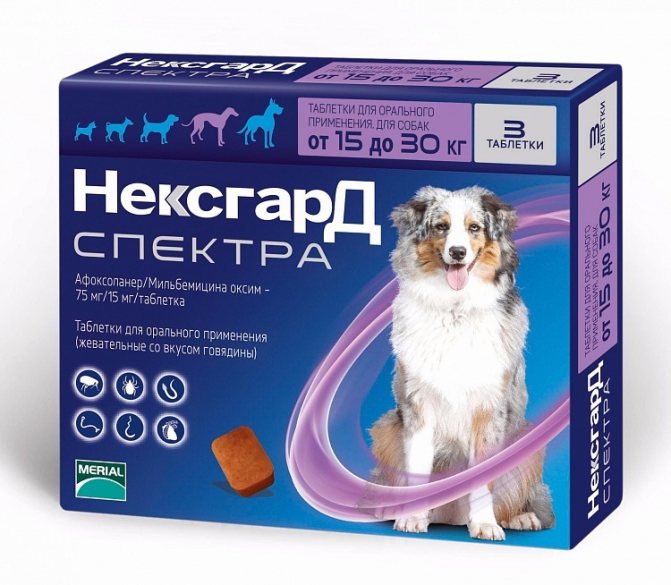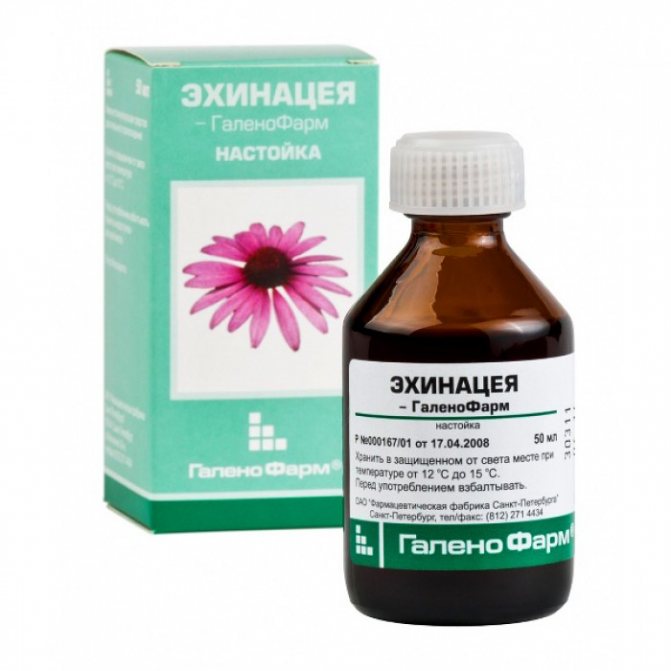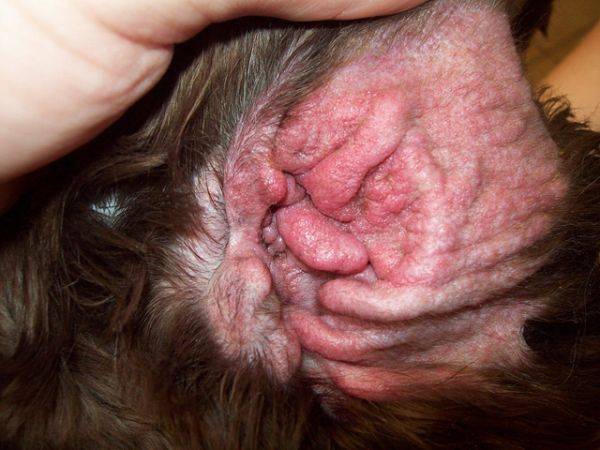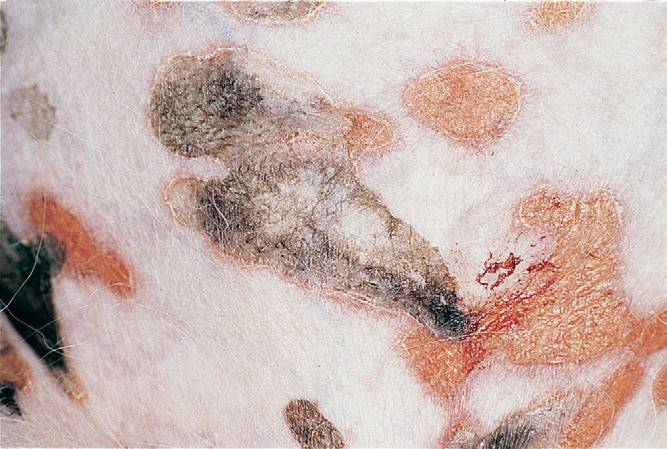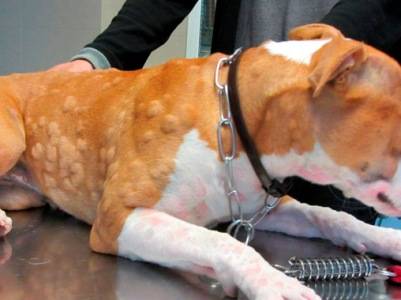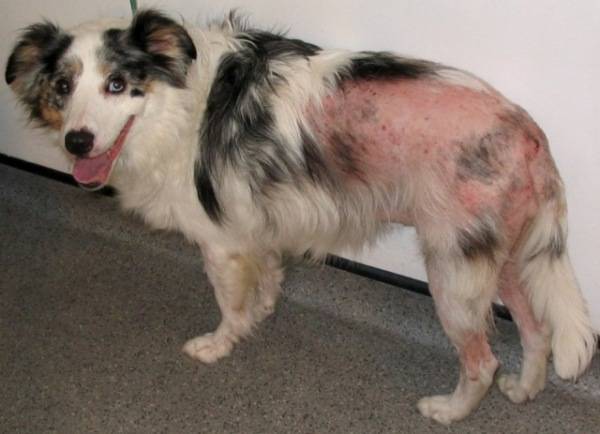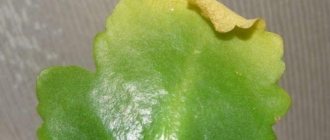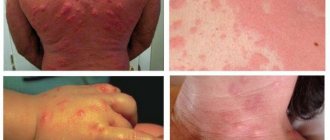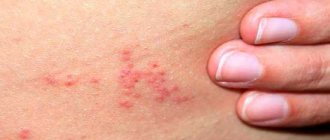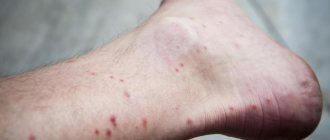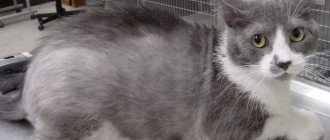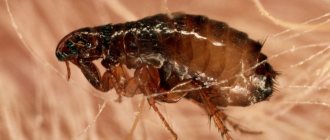Features of allergy in dogs and its classification
Allergy is an abnormally increased reaction of the body to some foreign substance that has got into it by any means. Under normal circumstances, all foreign and harmful is simply removed from the body, and allergy sufferers have a kind of inflammatory reaction with the release of histamine into the blood. It is this substance that makes itself felt with redness, rash and itching anywhere on the body.
Very often, this pathology has a genetic predisposition, and the strength of its manifestation depends on the amount of allergen that has entered the body.
Features of the flow:
- more severe symptoms (especially in the manifestation of itching) than in other warm-blooded animals and humans;
- a large list of allergens;
- intensification of manifestations over the years;
- the condition primarily affects the skin of dogs.
The most unpleasant complication of allergic reactions is scratches and wounds that appear due to severe uncontrolled scratching. Open wound surfaces serve as an entrance gate for pathogenic bacteria, so the process is often complicated by purulent inflammation at the sites of scratching.
The parts of the body most often affected by allergies in dogs can be seen in the photo:
The classification of allergic reactions in dogs combines the types of allergens and the way they enter the body.
Types of allergies:
- food allergies in dogs;
- medicinal;
- chemical (for animal care products or household chemicals);
- infectious (viral, bacterial, fungal or helminthic);
- insect (reactions to insect and cutaneous blood-sucking bites, i.e. allergy to fleas in dogs);
- autoimmune reactions (the rarest form).
Allergic reactions manifest themselves in two ways:
- cumulative (some time after contact with the allergen - up to several weeks);
- instant (almost immediately after interaction).
How to treat a pet at home?

In case of a reaction to fleas, parasites should be completely eliminated, the apartment should be treated at least three times.
You can get rid of them as follows:
- Brush out the coat every day, especially when insects are at their maximum.
- To carry out water procedures often. First you need to use special shampoos to kill fleas, then without them to get rid of irritation and itching.
After anti-flea remedies should be applied vigorously. It is allowed to combine drops on the withers with sprays and collars. It is necessary that the composition of the medicines contains a substance for repelling (repellent) and getting rid of insects (insecticide). Sometimes there is a reaction to flea drops or to a collar, so you should be careful.
In the case when the pet is allergic to the external environment, it is completely impossible to get rid of it. Therapy should be based on preventing complications, and itching should also be relieved periodically. For example, Bars ear drops eliminate irritation. They also use ointments with antibacterial components. Treatment is carried out throughout life.
You should try to exclude sources. Get rid of carpets in the apartment, put boots on their paws so that the dog does not touch the grass and flowers. If you are allergic to cold, warm clothing should be used.
Video: dog allergies: how to treat and what to give at home?
Allergy in dogs: general and specific symptoms
The body of any animal is densely covered with wool, therefore, signs of increased reactivity of the body do not immediately become visible. It is useful at the time of direct contact with the dog to conduct an unobtrusive examination of the skin, muzzle and ears. It should be noted that the shorter and lighter the coat, the more pronounced and noticeable the symptoms.
With the following list of symptoms, you can suspect an allergy in your pet.


Allergy localization
signs of itching (constantly scratching ears, scratching the body, gnawing or actively licking paws, rubbing against the floor or furniture);
- clear nasal discharge and lacrimation;
- peeling and redness on the pads of the paws and in the interdigital space;
- there is a rash, redness, local swelling, scratching;
- dandruff and dry skin;
- hair loss, bald patches without visible signs of inflammation;
- signs of ear inflammation;
- Sweating in the chest and underarms (allergic effusion)
- diarrhea or frequent bowel movements without changes in the state of feces.
Important: dogs do not sweat in the sense in which people are used to understanding the meaning of this physiological phenomenon. The sweat glands in these animals, which control thermoregulation, are located only on the pads and in the mouth area. Increased moisture in the armpits and in any other part of the body is always a sign of health problems and, most often, a symptom of an allergic reaction!
Specific signs of different types of allergies:
Food |
|
Flea dermatitis |
|
Contact dermatitis |
|
Atopic dermatitis |
|
Infectious | the standard symptoms of hyperreactivity accompany the primary disease of a fungal, viral or bacterial nature. |
Medicinal |
|
Allergic otitis media |
|
Autoimmune |
|
What is the danger of bites
It is worth saying that if such "neighbors" appear in the apartment, it is necessary to immediately take effective measures to get rid of them. There is no need to hope that they will leave the room on their own, they have everything they need for life and reproduction. Blood-sucking people can coexist with people for many years, while equipping nests and increasing their population.
In addition to the fact that they bring enormous discomfort, very painful bites, severe itching, redness, irritation, inflammation of the skin, they carry another danger.
These blood-sucking carriers are carriers of dangerous diseases that can cause serious complications:
- Typhus. A person infected with this infection begins to feel severe body aches, body temperature rises, nausea and vomiting appear.
- Brucellosis. Once in the human body, the virus infects the nervous system. An increase in temperature is observed, disturbances in the processes of the reproductive system can be observed, arthritis can develop, development occurs in individual forms, serious complications are possible.
- Anthrax. In this case, the internal organs are damaged. As for the symptoms, ulcers appear on the skin that do not heal. Death is possible without proper treatment.
In addition, parasites carry a huge amount of bacteria, microbes and harmful microorganisms on their bodies. They can cause a person to become infected with hepatitis, encephalitis, dermatitis. Remember that constant attacks of bloodsucking leads to nervous breakdowns. A person becomes very nervous, restless, and experiences constant stress.


Phantom pains may occur, a condition when in fact there is no bite, but the person experiences real pain from it. In addition, severe itching of the whole body can be observed. These are quite serious conditions that require drug treatment, the main condition is complete elimination of parasites.
Photos of types of allergies
|
|
|
|
| Autoimmune cutaneous vasculitis | Allergic otitis media | Interdigital dermatitis | Drug allergy |
|
| ||
| Food allergy | Quincke's edema with anaphylaxis | Erythema multiforme | lupus erythematosus |
|
|
| |
| Flea dermatitis | Hives | Atopic dermatitis | Bull pemphigoid |
comments
Veronica Thanks for the advice!
Marina To get rid of allergies, it is necessary to remove toxins and directly allergens from the body. We once had such a reaction to feed. They gave enterozoo for several days, it just absorbs and removes everything unnecessary.
Inga Our dog has sprinkled armpits after after a single piece of sausage.
Natalya Hello, my labrodor is 6 years old, initially at 8 months I was bitten by a pincer, after that the preparations for recovery, everything recovered for a while, my ears began to itch to redden, a lot of dirt was released, they treated everything and remained, natural food buckwheat beef rice vegetables , 1.5 years ago, we turned to the last clinic: the ears, as usual, do not help anything bad, but if it helps, then for a while, the hair climbs in clumps and then during the treatment everything worsened, but in fact: at the moment, either is not being treated for that or already the stage of not recovery, now - the wool climbs in clumps, stinks terribly, dandruff on the back, previously there were wounds on the stomach like eczema, If you shave it, it will look like a Dalmatian, because after the wounds that have been holding, black spots remain, the stench seems a very elderly person lives, his ears stink red every day we clean furacilin on top of the auricle there are darkening, on the paws between the fingers, as if the growths inside the pus, now they have replenished I can't walk with a finger, they put dexamitazone reaction 0, went to the clinic, put a blockade right into the tumor, also put dexofort 0.3 times with an interval of 10 days, nothing has changed, they prescribed vitamins B1, B6, B12, nystatin tablets and that's it, were tested in March said staphylococcus, but yes. There is also a smell from the mouth, sometimes the gums turn red, I don't even know what to do with it, is it really staphylococcus, and why we have not been able to cure it for a year and a half, or maybe this is an allergy and we are not treated with that, Here we are looking for hope that can save our friend, or put to sleep, we see how he suffers, they asked about whom to replace with hypoallergenic, they said that it would be even worse, but what can I say about the condition of this dog, we have not been vaccinated for 1.5 years, they say it will again be worse, I will be grateful for any information that will save our pet
Tusya More how to put to sleep in a dull head, then nothing came ??? Will you get sick, too, will you go to sleep? Young dog! Did you consult a doctor with calcium chloride? Did you take the tests? Or do you treat it by eye?
Svetlana 6 months old bulldog ... spots appeared ... itchy ..
Anaphylactic shock in a dog: symptoms, first aid
Regardless of what causes anaphylaxis, it always proceeds the same. It can be local and systemic, and the first form can be transformed into the second. Most often it occurs against the background of bites or the introduction of medicinal substances.
Local manifestation:
- urticaria (local redness, rash, itching);
- angioedema (under the skin and in the deep layers of tissues).
Systemic signs:
- vomiting and increased agitation, which is replaced by oppression;
- respiratory depression;
- cardiovascular failure and possible loss of consciousness.
Important: if there is a risk of anaphylactic shock or if anaphylactic shock occurs, the animal should be immediately taken to the veterinary hospital. There is no more than 1 hour to provide an animal with first aid, otherwise it will die!
Veterinarian actions:
- Immediate intramuscular administration of suprastin or diphenhydramine - 0.2 ml / kg.
- Intravenous cordiamine 0.02-0.6 ml / kg or subcutaneously sulfocamphokaine 0.2 ml / kg (supporting heart function).
- Subcutaneously any of the steroids: hydrocortisone, dexamethasone or dexon - 0.5-1 mg / kg, depending on the size of the dog.
- Intravenous "cocktail" of glucose and ascorbic acid in one syringe (m ml + 0.2 ml / kg).
- Intramuscularly 1 amp. immunofan.
Further, after stopping the attack within 24 hours:
- Calcium chloride 1 to 5 tablespoons - to drink during the day.
- Instead of water, it is better to drink a series of decoction.
- Remove itching with a hydrocortisone spray 2-3 times a day (4 amp. Hydrocortisone, 80 ml of alcohol, 50 ml of glycerin, 350 ml of water - fill in a hand spray).
Traditional methods
It is recommended to use traditional methods when small affected areas are observed on the body, otherwise it is imperative to consult a doctor.
It is also permissible to use them if at the moment it is not possible to consult a doctor.
- Apple vinegar. It is necessary to prepare a solution of vinegar 0.25 liters and 0.5 liters of water to wipe the affected areas.
- Soda. Dissolve 1 tsp in one glass of water. soda and use for wiping.
- Tea. You can use a tea bag, which is brewed in the usual way, but then, after cooling, is applied to the bite.
- Ammonia. Prepare a solution of 1 tsp. alcohol and a glass of water helps to relieve pain.
Aloe juice, lemon juice will also help, but you should always remember that allergic reactions are possible, which are very dangerous.
Diagnostics
Before the diagnosis of allergy is confirmed, the veterinarian will rule out those diseases that have similar clinical manifestations. Differential diagnostics includes skin scrapings, feces analysis for helminths, trichoscopy, bacterial cultures and blood tests, etc.
Because Since the symptoms of all conditions are basically similar, the main diagnostic principle of veterinary dermatology is to eliminate one by one potential allergens. The earliest reasons to look at are skin parasites (fleas) and food.
To determine food reactivity, diagnostic nutrition is introduced for 1.5-2 months and a protein map is drawn up. During this period, the dog's reactions to various dietary proteins are tested. All reaction results are recorded in the protein card. Products containing proteins reactive for the body will need to be excluded until the end of the animal's life. There is no other way to find out what food a dog is allergic to! Human tests are absolutely inappropriate in this case.
To determine the reaction to fleas and their saliva, a wet white paper test, a visual examination, and a trial diagnostic treatment are used.When tested with wet paper, red spots from the "black" dandruff combed from the dog's skin and hair will blur on the sheet - these are traces of flea activity.
It is possible to determine the allergy to other substances in the environment if the owners are very attentive to their pets. An attentive owner notices the slightest changes in the health of the pet and the reasons that caused these transformations, which are then brought to the attention of the veterinarian. Also, when assuming allergies to plants and their pollen, seasonality is taken into account, and not just the external signs of the disease.
What to do?
First of all, you should take as a rule: monitor the behavior and condition of the dog during the first day of wearing a new collar. Moreover, this should be done even when you are buying a model that you have already used.
At the first signs of allergy - scratching, reddening of the skin, lacrimation, coughing, sneezing, the collar should be removed immediately, without waiting for scratching and weeping wounds. If the condition worsens, it is recommended to give the pet antihistamines to avoid swelling and reduce itching, as well as wash it with shampoo, thereby getting rid of the source of the allergy remaining on the coat.
If the allergy was started or it was not immediately possible to determine that it was not caused by food, but by the collar, you will have to select drugs to treat the wounds that have appeared. The collar should, of course, also be removed.
Allergy treatment
If a dog has an allergy, only a veterinarian knows how to treat it. It is imperative that the body be removed from the reactive state only by a specialist. only he can distinguish non-standard reactions from some other infectious and non-infectious diseases, which have a similar clinical picture.
Treatment of allergies in dogs is always complex and depends on the type of reaction and its symptomatic manifestations. But regardless of the nuances of the development of the condition, two main points of treatment are present in any case:
- Termination of exposure to the body of allergens.
- Antihistamine therapy - general and local.
They feed sick or recovering animals with a special hypoallergenic food for dogs with allergies, specially designed for such cases. You can also compose your diet according to the food diary, excluding all reactive food names.
The same procedure accompanies drugs - only drugs that do not cause allergies can be administered. Funds that provoked a non-standard reaction at least once are usually recorded in the animal's personal medical record or in the veterinary passport.
Features in medical care for different types of allergies:
- Food - determination of the type and elimination of food allergen by means of a diagnostic diet.
- Insect - removal of all cutaneous blood-sucking insects from the surface of the animal and from its environment.
- Medicinal - immediate anti-allergic or, if necessary, anti-shock therapy (usually local treatment is not required).
- Infectious - determination of the type of infection, accompanied by an immune failure, and its elimination (without eliminating the cause of the allergy, antihistamine therapy will be ineffective).
- Atopic dermatitis - is not completely curable, so symptomatic antihistamine therapy and local antipruritic effects will accompany the dog for life.
- Autoimmune reaction - the introduction of massive doses of glucocorticoids to relieve the exacerbation of the disease with subsequent transfer to the minimum maintenance dose; therapy that suppresses immune activity so that the body stops "attacking" its own cells and organs;
- symptomatic therapy, depending on which organ or system is "attacked" by the immune system.
- Allergic otitis media - against the background of antihistamine therapy, a general anti-inflammatory treatment of otitis media is carried out.
How does the infection of apartments occur?
The infection can be caused by pets, which will bring such "neighbors" from a walk on the street. A person can independently bring them into the room on their clothes or shoes. Quite often, infection occurs from basements and attics, where large colonies of parasites are located.
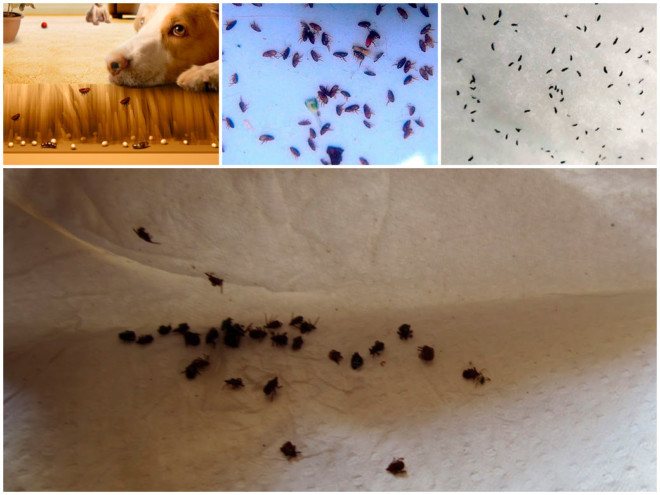

In case of infection, it is required to take immediate measures, because by giving them time, we thereby complicate the control procedure, they multiply very quickly, and it is much more difficult to cope with large colonies.
Review of Allergy Medications in Dogs
Due to the peculiarities of the manifestation and course of allergic reactions in dogs, the range of antihistamines allowed for their use is quite wide. All antihistamines are divided into 3 large groups:
- drugs that reduce the reaction of H1 / 2-receptors (what in the body reacts to histamine);
- drugs that bind and eliminate histamine;
- drugs that prevent the production of histamine.
In dogs, agents belonging to the first group are most often used, i.e. reduce the body's response to histamine circulating in the blood, relax smooth muscles, relieve spasms, reduce swelling by reducing vascular permeability and eliminate another obvious allergic clinic. The decision of what to give a dog for allergies is made only by a veterinarian!
Diphenhydramine (diphenhydramine)
Has a pronounced antihistamine sedative and anti-inflammatory effect. It is used for any reactive failures, including medicinal ones. It is administered subcutaneously or intramuscularly in the form of a 1% solution twice a day. Dose: 0.6-0.8 mg / kg of body weight of the animal. |
Diprazine (fenergan, pipolfen, allergan)Effective for dermatitis accompanied by itching. Causes drowsiness. Injected intramuscularly in the form of a 2.5% solution or tablets. Dosage: 4.5-5 mg / kg 2-3 times a day. |
Diazolin (mebhydrolin, incidental, omeril)Prescribed for allergies of unexplained origin. Administered orally in the form of pills. Partially inhibits the work of the central nervous system. Dose calculation: 3-4 mg / kg once or twice a day. |
Suprastin (allergens)It is used absolutely for all forms of allergies. Has a slight sedative effect. It is given in the form of a 2% solution. Dosage: 0.1-0.5 ml twice a day. |
Tavegil (Angistan, Clemastine)The therapeutic effect is similar to diphenhydramine, but with a longer duration of action. The dosage is the same for the use of a 0.1% solution, and for tablets: 0.015-0.02 mg / kg 1-2 times a day. |
Ketotifen (astafen, zaditen)Often used for anaphylactic shock, histamine bronchospasm and long-term systematic elimination of allergic reactions (due to the cumulative effect). Dose: 0.02-0.05 mg / kg. Twice a day with a course for 2-3 months. |
Astemizole (gismanal)It works well for food allergies, hives and rhinitis. Ask inward. Do not use during pregnancy. Dose: 0.3-0.35 mg / kg 2-3 times a day. |
CetirizineAn excellent anti-allergic agent that does not cause drowsiness. Once or twice a day. Dose: 0.25-0.5 mg / kg of animal weight. |
Loratadine (claritin)It works well for allergic rhinitis and lacrimation in dogs. Not prescribed for pregnant bitches. Approximate dosage: 0.1-0.15 mg / kg once a day. |
Bicarfen
Antihistamine drug with antiserotonin action for a wide range of purposes: allergic lacrimation and rhinitis, drug allergy and food reaction, atopic dermatitis, neurodermatitis, hay fever. Scheme: 1-1.5 mg / kg up to two times daily for 1-2 weeks. With seasonal outbreaks, you can repeat the course throughout the year. |
Processing of premises
If the dog lives at home, it is necessary to process all the rooms, furniture and carpets, not forgetting about the pet's belongings (including soft toys).In an animal kept in an aviary, a booth, bedding and other household items are subject to disinfestation. Without treatment, treatment becomes meaningless, since flea eggs left in the house remain viable for up to two weeks.
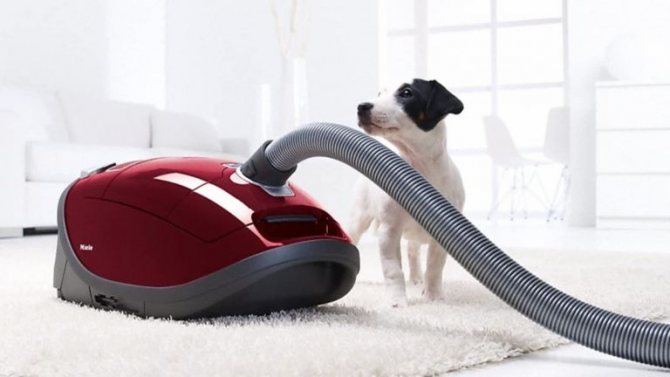

Cleaning the apartment
You can destroy insects in a house or apartment in several ways:
- Skirting boards, carpets, furniture, ventilation openings are treated with special sprays. Sometimes re-processing is required after 7-10 days.
- Folk remedies: spread wormwood, tansy or lavender around the house. Another option is to wash the floors daily for 10 days with the addition of eucalyptus, lavender, citrus essential oils.
- Exposure to low temperatures - in winter you can leave the windows open for 4-6 hours and leave the house.
- Calling pest controllers is an extreme case when fleas have settled in part of an apartment building.
After any type of processing, it is necessary to vacuum the furniture and carpets, wash all surfaces and floors, and boil textiles. This will destroy the surviving larvae and adults.
Cleaning the booth
There are no fundamental differences in the treatment of the booth and the apartment: the bedding is taken out and boiled (although it is better to throw it away and buy a new one), inside the house they are sprinkled with insecticides, and then washed with water and essential oils.


For the first time (up to a month), you can spread fresh tansy or wormwood in the aviary. If it's winter, then such measures are unnecessary.
Precautions
Chemical poisoning is an extremely unpleasant phenomenon. To avoid it, you need to protect yourself during room processing:
- wear gloves and cover your face - with a handkerchief, respirator, medical mask;
- protect your eyes with glasses;
- read the instructions carefully, avoid overdose and use of expired products;
- remove all household members for a while - it is better if animals, children, the elderly and family members with chronic diseases stay outside the apartment for at least a day;
- take a bath after the procedure, wash your hands thoroughly;
- ventilate the area well after treatment and wash all surfaces with clean water.
If, due to the use of funds, an allergy has begun or poisoning has occurred, you must go to the hospital.



